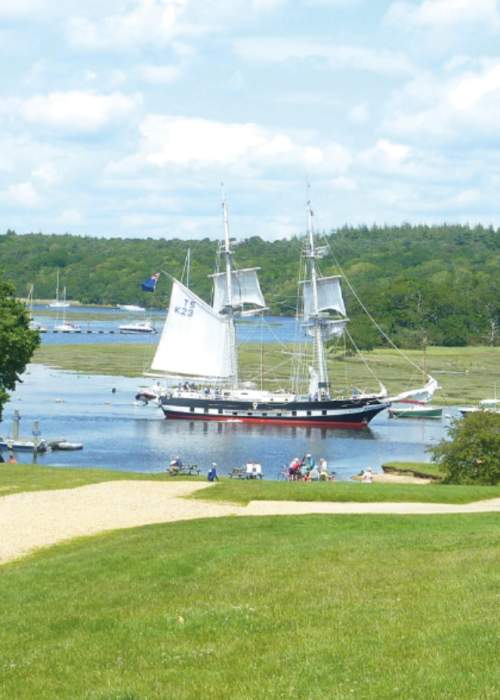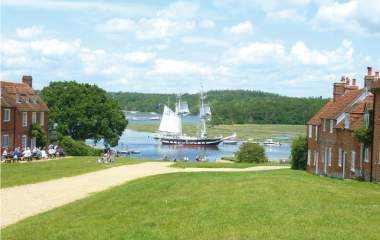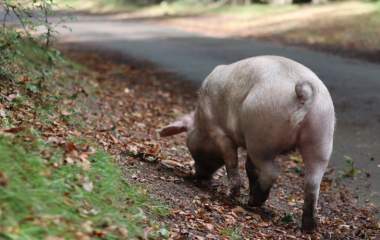The New Forest's History & Heritage
The rich cultural heritage and history is one of the many reasons why visitors are so attracted to visiting the New Forest. The New Forest is full of history, that of factual and hauntingly spooky. From where it first started with William the Conqueror and his ‘Nova Foresta', to the smuggling and crimes along the coastline…
Whether history is your passion, or not, the New Forest’s history and heritage is somewhat fascinating to everyone who has heard of the Forest, lives in the Forest or has visited the Forest.
A brief history of the New Forest
So, let’s begin with the man who started it all off… William the Conqueror.
There can be few other places in England where the ancient landscape has remained so unchanged. In 1079 when William The Conqueror named the area his ‘new hunting forest', little could he imagine that nearly 1,000 years later his ‘Nova Foresta' would still retain its mystery and romance.
The ancient system established by William The Conqueror to protect and manage the woodlands and wilderness heaths is still in place today through the efforts of Verderers, Agisters and Commoners - literally the judges, stockmen and land users of the forest.
His son, King William II is said to have been fatally wounded and died due to an arrow being shot at him in 1100AD by Sir Walter Tyrrell. You can visit the Rufus Stone, which is (supposedly) located in the exact place where this happened and apparently where his ghost still haunts!
Tudor and Elizabethan influences
King Henry VIII, probably Britain’s most famous monarch, has left his influence on the area by his commissioning of both Hurst Castle and Calshot Castle respectively. Both were built to help defend the Solent and the Southampton Water from possible invasion.
He also had an influence at Beaulieu, where a monastery once was. After the dissolution of the monasteries, the estate was sold to the Earl of Southampton in 1538. Discover more about the fascinating history of the Abbey and the estate’s subsequent use on a visit.
Breamore House, near Fordingbridge is a fine example of an Elizabethan manor house.
The part the New Forest played during the WW1 and WW2
In the First World War wounded soldiers were brought to Brockenhurst to be treated in the make-shift hospitals set up by local residents who owned some of the larger properties in the village.
The New Forest's strategic location on the south coast meant that it was crucial in a range of operations both for British, Commonwealth and US and Canadian troops in World War II.
During World War II, Balmer Lawn in Brockenhurst was used by Generals Montgomery and Eisenhower for meetings as they planned the D-Day invasion. Ashley Walk, near Godshill was a bombing range used to test the 'bouncing bomb' and there were 12 airfields across the area - some of which can still be visited today including RAF Stoney Cross. Take a tour of the 12 airfields with The Friends of The New Forest Airfields Heritage Centre.
Lepe also has evidence of WW2 still present on its beach (now Lepe Country Park). The area played a role in D-Day operations, with many troops leaving from Lepe to head to Normandy.
Visit history from across the centuries
Step back in time and take a trip to some of our fantastic towns, villages and attractions that hold a wealth of history. A great place to start is at the New Forest Heritage Centre in Lyndhurst where the on-site museum will enlighten you on the history of the New Forest and how the land has been influenced by people over the centuries.
Learn about the forest's history and archaeology at our many other museums and heritage centres. From stately homes such as Palace House at Beaulieu.
Take a trip to the maritime village of Buckler's Hard, where ships for Nelson's fleet were built, using the mighty oaks from the forest. Take a look around the site, and visit the amazing Maritime Museum.
Make a visit to Britain's only surviving tidal mill, Eling Tide Mill, on the edge of the New Forest.
There are many hidden treasures for you to discover if you know where to look as well. For example, Alice Liddell, Lewis Carroll's inspiration for Alice In Wonderland, is buried in the churchyard in Lyndhurst - see if you can spot here gravestone. You'll also find the grave of Sir Arthur Conan Doyle in the churchyard in Minstead and that of Florence Nightingale at Wellow.
There are also lots of fantastic historic walks that you can follow in the New Forest to see some of our historic monuments.
Visiting these places will help your knowledge about the past in this fascinating part of the world grow even more.
Discover more about the New Forest’s culture, myths and legends
Do you believe the ghosts of kings and even witches, such as Cybil Leek, haunting the houses and towns and villages in the New Forest? Visit the haunted village of Burley and read more about our witchcraft and ghosts to find out for yourself.
You can’t forget the wonderful commoners, who spend day in and day out protecting and looking after the acres of open forest, and managing the wonderful wildlife, including ponies, pigs, donkeys and cattle. They help us to keep the New Forest landscape unchanged from when it was first founded and named in 1079.
So, if you’d like to find out more about the incredible heritage of the New Forest come and visit us and book a stay here today.







